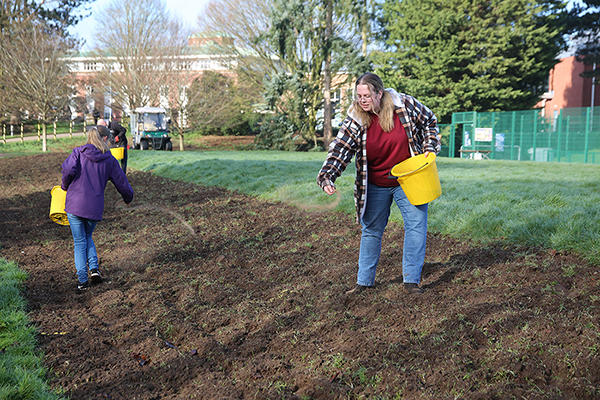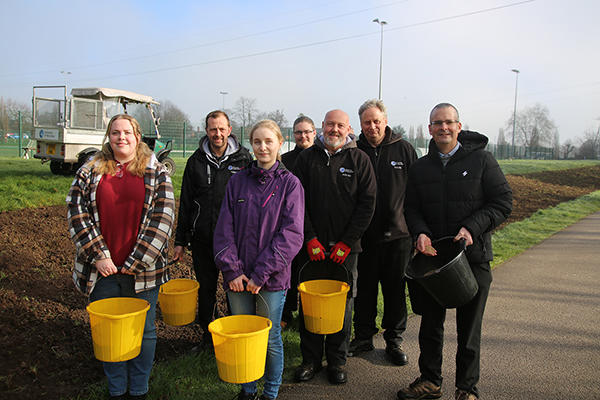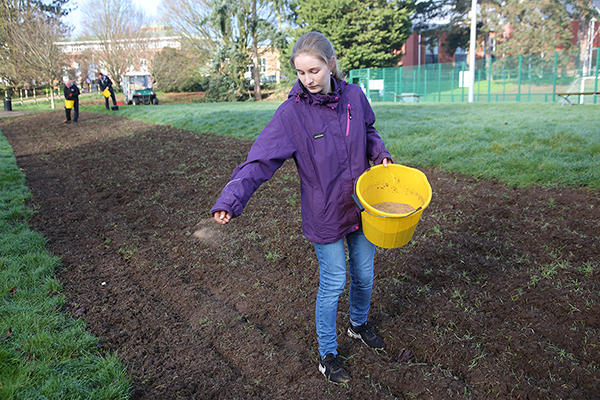Students and staff at the University of Worcester have created a new wildflower area to allow insects and other animals to thrive.
 A student sows some seeds for the new wildflower area on campus
A student sows some seeds for the new wildflower area on campus
Members of the University Nature Society worked with Grounds staff to sow a wildflower seed mix over an area of 500 square metres, on a popular pedestrian route at the University’s St John’s Campus.
The perennial flowers have been chosen specifically to create a habitat which will help to provide food and shelter for a number of species, including bees and butterflies, but is also likely to support birds and small mammals like meadow voles. A total of 22 species have been sown, including knapweed, wild teasel, oxeye daisy, kidney vetch, common agrimony, field scabious, selfheal, red campion and bird’s-foot trefoil.
This scheme was partly paid for with funding through the Natural Networks Programme and the University contributed the rest. The Programme, a partnership between Worcestershire County Council and the Worcestershire Wildlife Trust, is a Worcestershire-wide scheme. Funded by the European Regional Development Fund, it offers grants and advice to projects which aim to create or restore wildlife-rich habitats.

The aim of this wildflower initiative is three-fold; increase biodiversity, reduce the University’s carbon footprint through less mowing at the site, and enhance students’ and staff’s health and wellbeing while on campus, helping to meet three of the 17 global Sustainable Development Goals set by the United Nations.
Over the next year the wildflower strip will be regularly cut to encourage the flowers to establish themselves, but by next summer those passing should see a wealth of flowers on display.
Various wildflower areas have been created at the University over the past decade on the St John’s Campus. The new site sits opposite one of the University’s first wildflower areas created in 2012, using green hay collected from Malvern Common.

Principal Lecturer in Ecology and Environmental Management, Dr Duncan Westbury, who has helped to steer the project, said: “This scheme is important because we have lost so many wildflower areas in the wider landscape, and we know that by establishing wildflowers in more urban areas it can be very beneficial for a vast array of wildlife species.” He added that it was possible for everyone to make a positive impact on wildlife in their own gardens using a similar method. “Even if you don’t designate a large area to wildflowers, a wildflower plant here and there in your herbaceous border can be beneficial,” he said. “Every bit helps to provide food and shelter for various species.”
This is the latest in a long line of biodiversity initiatives at the University, which have also seen the introduction of bee hotels, bird and bat boxes, and a hedgehog box. Organisers are currently exploring opportunities for further wildflower areas on the University’s campuses.